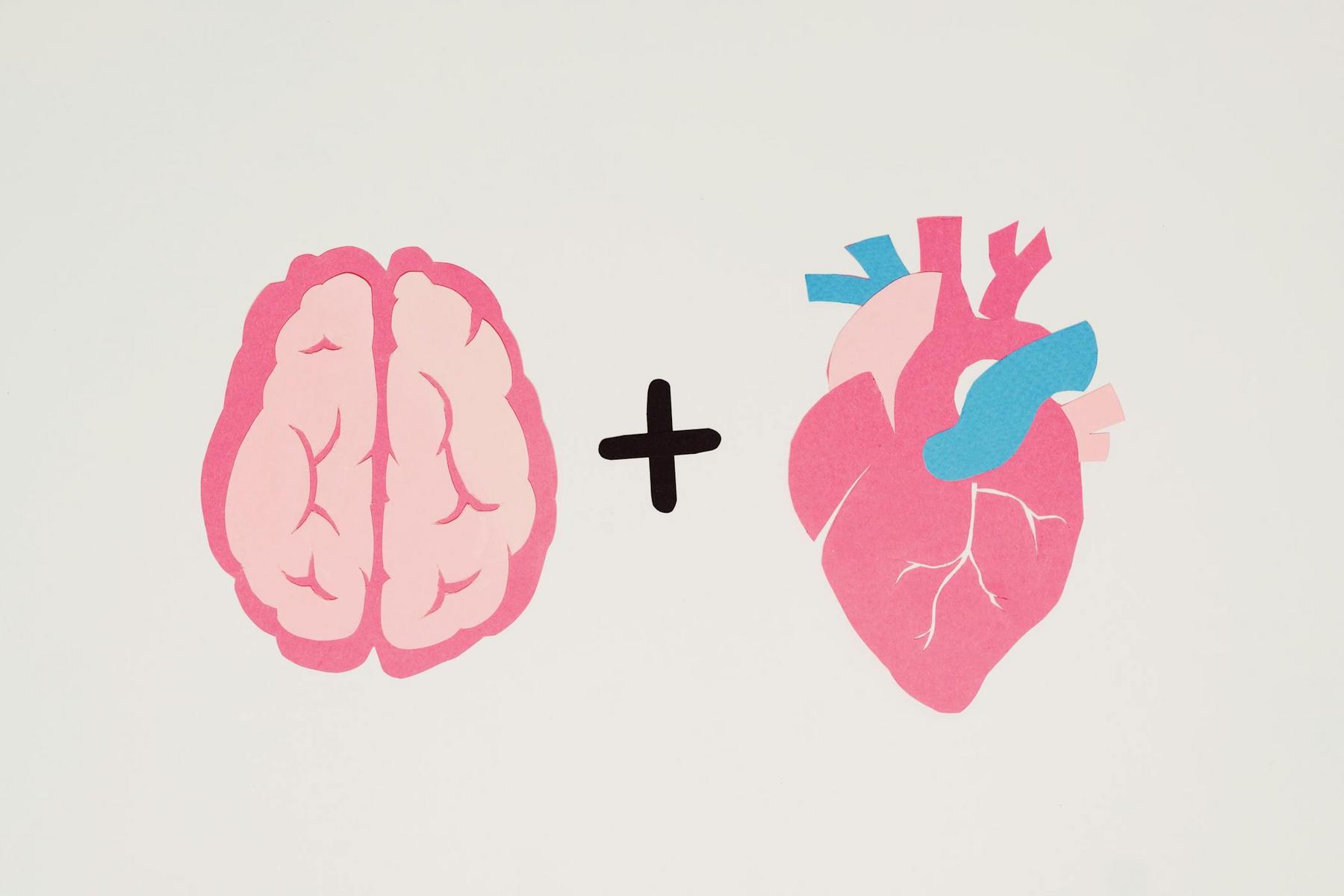In an era where chronic stress affects millions of Australians daily, one evidence-based technique has quietly revolutionised how we approach mental and physical wellbeing for nearly a century. Progressive Muscle Relaxation stands as perhaps the most scientifically validated and enduring stress management method in modern healthcare, yet many remain unaware of its profound theoretical foundations and remarkable clinical history. This systematic approach to tension release has transformed countless lives whilst maintaining rigorous scientific credibility—a rare achievement in the wellness landscape. Understanding the rich history and sophisticated theory behind Progressive Muscle Relaxation reveals why this technique continues to be prescribed by healthcare professionals across Australia and worldwide, offering hope for those seeking evidence-based solutions to stress-related challenges.
Who Was Edmund Jacobson and How Did Progressive Muscle Relaxation Begin?
The genesis of Progressive Muscle Relaxation traces back to the pioneering work of American physician Edmund Jacobson, whose groundbreaking research in the early 1900s fundamentally transformed our understanding of the mind-body connection. Born in Chicago on April 22, 1888, Jacobson demonstrated exceptional intellectual prowess from an early age, completing his Bachelor of Science degree at Northwestern University in just two years by 1908. His academic journey continued at Harvard University, where he first presented his revolutionary relaxation technique in 1908, marking the beginning of what would become a lifelong dedication to understanding stress and relaxation mechanisms.
Jacobson’s educational background was remarkably comprehensive, reflecting the interdisciplinary nature of his later contributions. After obtaining his Master’s and Doctorate degrees from Harvard University, he pursued postgraduate studies at Cornell University before returning to Chicago to work in physiology. His medical education culminated with an M.D. degree from Rush Medical School in 1915, providing him with both the theoretical foundation and clinical expertise necessary to develop his innovative approach.
The theoretical foundations emerged from Jacobson’s clinical observations of patients across various conditions. During his early practice, he noted that regardless of their specific ailments, many patients exhibited chronic muscle tension that seemed to exacerbate their primary conditions. More significantly, he observed that when instructed to simply “relax,” patients often struggled to achieve meaningful relaxation, lacking both awareness of their muscle tension and practical skills to release it effectively.
Using innovative low microvoltage apparatus, Jacobson made the first accurate electrical measurements of muscular tension, nerve impulses, and mental activities in neuromuscular sites in living humans. These groundbreaking measurements provided empirical evidence for the connection between excessive muscular tension and various physical and psychological disorders, establishing a scientific foundation for his therapeutic approach.
In 1929, Jacobson published his seminal work “Progressive Relaxation,” detailing his comprehensive procedure for systematically removing tension from muscles throughout the body. This publication represented the culmination of two decades of research and marked the formal introduction of Progressive Muscle Relaxation to the medical community. The original protocol was notably thorough, requiring weekly instruction sessions and daily practice to master the technique effectively.
What Are the Core Theoretical Principles Behind Progressive Muscle Relaxation?
The theoretical framework underlying Progressive Muscle Relaxation is rooted in the fundamental principle that physical and mental states are inextricably linked through complex neurophysiological pathways. Jacobson’s core hypothesis proposed that muscle tension represents the body’s physiological response to anxiety-provoking thoughts and stressors, creating a cyclical relationship where psychological distress generates physical tension, which in turn reinforces and perpetuates mental anxiety.
This bidirectional relationship operates through multiple physiological mechanisms that modern neuroscience research has increasingly illuminated. When individuals experience stress, fear, or anxiety, the sympathetic nervous system activates the body’s fight-or-flight response, leading to increased muscle tension, elevated heart rate, and heightened arousal states. This physiological activation serves an adaptive function in acute stress situations but becomes problematic when chronically activated.
Progressive Muscle Relaxation interrupts this cycle by deliberately engaging the parasympathetic nervous system, which governs the body’s rest and digest functions, promoting physiological and psychological equilibrium. The technique operates on the principle that by systematically tensing and then releasing specific muscle groups, practitioners can enhance proprioceptive sensitivity and develop refined awareness of physical sensations associated with both tension and relaxation states.
The contrast principle represents another fundamental aspect of Progressive Muscle Relaxation theory. Rather than attempting to achieve relaxation directly, the technique deliberately creates muscle tension before release, amplifying the subsequent sensation of relaxation through contrast. This approach recognises that relaxation is not merely the absence of tension but rather an active physiological state characterised by specific neuromuscular changes.
Modern understanding has been enhanced by research into neuroplasticity and the brain’s capacity for learning and adaptation. The systematic practice of tension and relaxation cycles appears to create lasting changes in neural pathways associated with stress response and muscle control. Neuroimaging studies have revealed that voluntary muscle relaxation activates specific brain regions including the primary motor cortex and supplementary motor areas, indicating that relaxation is an active neurological process.
| Theoretical Component | Mechanism | Clinical Outcome |
|---|---|---|
| Mind-Body Connection | Bidirectional stress-tension cycle | Reduced psychological and physical symptoms |
| Contrast Principle | Deliberate tension before release | Enhanced relaxation awareness |
| Proprioceptive Training | Systematic muscle group awareness | Improved self-regulation skills |
| Parasympathetic Activation | Rest and digest response engagement | Decreased autonomic arousal |
| Neuroplasticity | Neural pathway adaptation | Long-term stress management improvement |
How Do the Neurobiological Mechanisms Support Progressive Muscle Relaxation’s Effectiveness?
Contemporary neuroscience research has revealed sophisticated neurobiological mechanisms that validate Progressive Muscle Relaxation’s therapeutic effectiveness. Neuroimaging studies using functional magnetic resonance imaging have demonstrated that voluntary muscle relaxation activates specific brain regions including the primary motor cortex and supplementary motor area, challenging earlier assumptions that relaxation represents simply the absence of neural activity.
Research has shown that muscle relaxation requires active cortical engagement, with movement-related cortical potentials preceding both muscle contraction and relaxation phases. This finding indicates that effective relaxation involves deliberate neural control rather than passive muscle release, supporting the structured approach advocated by Jacobson and providing scientific justification for systematic Progressive Muscle Relaxation protocols.
The role of inhibitory neural circuits represents a particularly important aspect of these neurobiological foundations. Studies utilising transcranial magnetic stimulation have shown that during muscle relaxation, the excitability of corticospinal tracts controlling relaxing muscles is significantly suppressed compared to resting conditions. This suppression results from activation of intracortical inhibitory circuits, particularly those involving local GABAergic connections in the motor cortex.
The concept of “top-down” and “bottom-up” processing provides additional insight into Progressive Muscle Relaxation’s neurobiological mechanisms. In top-down processing, higher brain centres including the cerebral cortex and cerebellum initiate voluntary muscle contraction and subsequent relaxation. Simultaneously, bottom-up processing occurs as proprioceptive stimulation from peripheral muscles ascends to the brain via the spinal cord and brainstem, providing sensory feedback about muscle tension and relaxation states.
Research into electrodermal activity has provided objective measures of Progressive Muscle Relaxation’s physiological impact, demonstrating significant changes in autonomic nervous system functioning during relaxation exercises. Studies have shown that Progressive Muscle Relaxation produces linear decreases in electrodermal activity throughout relaxation exercises, indicating progressive activation of the parasympathetic nervous system.
The neurochemical basis involves multiple neurotransmitter systems that regulate stress response and emotional states. Research indicates that regular Progressive Muscle Relaxation practice influences serotonin levels whilst affecting gamma-aminobutyric acid neurotransmission, which plays crucial roles in anxiety regulation and muscle relaxation. These neurochemical changes provide a biological foundation for the technique’s anxiolytic and muscle-relaxing effects.
What Clinical Applications Have Demonstrated Progressive Muscle Relaxation’s Therapeutic Value?
The clinical applications of Progressive Muscle Relaxation have expanded significantly since Jacobson’s original work, with contemporary evidence-based research demonstrating effectiveness across diverse medical and psychological conditions. Modern healthcare has validated Progressive Muscle Relaxation as a safe, cost-effective, and clinically significant intervention, establishing it as a cornerstone of integrative healthcare approaches.
Anxiety management represents one of the most well-documented applications, with numerous controlled studies demonstrating significant reductions in both trait and state anxiety following systematic training. Research involving hospitalised patients has shown that Progressive Muscle Relaxation training produces statistically significant improvements in anxiety scores when measured using standardised assessment tools. The technique’s effectiveness appears to result from its ability to interrupt physiological arousal patterns that maintain anxious states whilst providing practical coping skills.
Depression management represents another significant clinical application, with research demonstrating effectiveness both as a standalone intervention and as an adjunct to conventional approaches. Studies involving patients with coronary heart disease have shown that twice-daily Progressive Muscle Relaxation practice over five-day periods produces measurable improvements in depressive symptoms. The mechanism underlying antidepressant effects appears to involve multiple pathways, including restoration of autonomic balance and enhancement of self-efficacy.
Chronic pain management has emerged as a particularly important application, with research demonstrating effectiveness across various pain conditions including headaches and musculoskeletal disorders. The technique’s analgesic effects appear to result from multiple mechanisms, including reduction of muscle tension that contributes to pain, modulation of pain perception through relaxation-induced changes in attention, and promotion of endogenous opioid release.
Sleep disorders represent another well-established application, with research demonstrating effectiveness in improving both sleep quality and sleep onset latency. The technique’s sleep-promoting effects result from its ability to reduce physiological arousal that interferes with normal sleep processes whilst promoting the relaxed physical state conducive to sleep initiation. Clinical studies have shown comparable efficacy to other interventions for certain types of insomnia.
Cardiovascular conditions represent an increasingly recognised application, with research demonstrating effectiveness in reducing blood pressure and improving heart rate variability. Studies have shown that regular Progressive Muscle Relaxation practice can produce clinically significant reductions in both systolic and diastolic blood pressure, particularly in individuals with stress-related hypertension.
How Has Progressive Muscle Relaxation Evolved for Modern Healthcare Applications?
The evolution of Progressive Muscle Relaxation from Jacobson’s original comprehensive protocols to contemporary abbreviated versions reflects both practical considerations and advancing understanding of the technique’s essential elements. Whilst Jacobson’s original method required extensive training periods with weekly instruction sessions and daily practice lasting up to an hour, modern adaptations have successfully condensed the technique into more accessible formats without compromising therapeutic effectiveness.
The most significant modification came from Joseph Wolpe in the 1950s, who dramatically shortened the protocol to approximately 20 minutes whilst maintaining core therapeutic principles. Wolpe’s adaptation was motivated by his work in systematic desensitisation, where he used Progressive Muscle Relaxation as a foundational component for treating anxiety disorders. His modifications focused on eliminating redundant elements whilst preserving essential tension-relaxation cycles and systematic progression through major muscle groups.
Modern Progressive Muscle Relaxation adaptations have further refined the technique to address diverse clinical populations and treatment settings. Contemporary protocols typically involve 10-20 minute sessions that can be conducted individually or in group settings, making the technique accessible to broader ranges of patients and healthcare contexts. These abbreviated versions maintain core principles whilst streamlining muscle group sequences and reducing tension phase durations.
The development of “release-only” techniques represents another significant evolution. As practitioners develop proficiency in recognising muscle tension and relaxation states, they can progress to techniques that focus primarily on releasing tension without preliminary contraction phases. This adaptation is particularly useful for individuals with certain conditions where muscle tension might be contraindicated, such as acute muscle injuries or severe arthritis.
Technology integration has revolutionised Progressive Muscle Relaxation delivery and accessibility, with digital platforms enabling widespread dissemination of guided relaxation sessions. Mobile applications, online programmes, and digital therapeutics platforms now provide standardised instruction with features such as progress tracking, customisable session lengths, and integration with other health monitoring tools. These technological adaptations have made Progressive Muscle Relaxation more accessible whilst maintaining fidelity to evidence-based protocols.
The integration with other therapeutic modalities represents an important trend in modern applications. Contemporary practice often combines Progressive Muscle Relaxation with complementary techniques such as guided imagery, breathing exercises, mindfulness meditation, and biofeedback to create comprehensive stress management programmes. These multimodal approaches leverage synergistic effects of different relaxation techniques whilst addressing diverse aspects of stress response and psychological wellbeing.
The Enduring Legacy and Future of Progressive Muscle Relaxation
Progressive Muscle Relaxation stands as one of the most enduring and scientifically validated contributions to modern healthcare, representing nearly a century of continuous development, research, and clinical application. From Edmund Jacobson’s pioneering observations in the early 1900s to contemporary neuroscience research revealing complex mechanisms of action, this technique has demonstrated remarkable adaptability and sustained relevance across diverse healthcare contexts.
The theoretical foundations underlying Progressive Muscle Relaxation continue to find validation through modern research, with neuroimaging studies confirming Jacobson’s fundamental insight that physical and mental states are inextricably linked through complex neurophysiological pathways. Contemporary understanding reveals a sophisticated interplay of neural networks, neurotransmitter systems, and physiological processes that extend far beyond simple muscle relaxation, demonstrating potential as a comprehensive health-promoting intervention.
The clinical applications have expanded dramatically from Jacobson’s original focus to encompass a broad spectrum of medical and psychological conditions. Evidence-based research has established effectiveness in treating anxiety, depression, chronic pain, sleep disorders, cardiovascular conditions, and numerous other health challenges. The technique’s non-pharmacological nature, minimal side effects, and cost-effectiveness make it particularly valuable in contemporary healthcare contexts emphasising patient-centred, integrative approaches.
Future research directions continue to reveal new applications and mechanisms, with particular promise in areas such as precision approaches, digital therapeutics, and multimodal intervention strategies. The growing understanding of individual differences in responsiveness opens possibilities for personalised protocols that optimise therapeutic outcomes based on patient characteristics and preferences. As modern healthcare continues to recognise the importance of stress management and patient empowerment, Progressive Muscle Relaxation’s century-long track record positions it as an essential component of comprehensive wellness strategies.
What makes Progressive Muscle Relaxation different from other relaxation techniques?
Progressive Muscle Relaxation distinguishes itself through its systematic approach of deliberately tensing muscles before releasing them, creating a contrast that enhances awareness of relaxation states. Unlike passive relaxation methods, it actively engages both physical and mental processes, requiring conscious participation and skill development. The structured progression through specific muscle groups provides comprehensive coverage while building proprioceptive awareness that extends beyond individual sessions.
How long does it typically take to learn Progressive Muscle Relaxation effectively?
Most individuals can learn the basic techniques within 4-8 training sessions, though mastery develops over several weeks of regular practice. Early sessions focus on understanding proper tension and relaxation techniques for each muscle group, while subsequent practice helps in achieving quicker and more efficient relaxation. Research indicates that noticeable benefits often appear within the first few sessions, with continued improvement over time.
Can Progressive Muscle Relaxation be safely practised by people with physical limitations?
Yes, Progressive Muscle Relaxation can be adapted for individuals with various physical limitations. Modifications such as reducing tension intensity, eliminating problematic muscle groups, or switching to release-only techniques allow those with physical constraints to safely benefit from the method. It is advisable for individuals to consult with healthcare providers to tailor the practice to their specific needs and conditions.
What does current research reveal about Progressive Muscle Relaxation’s effectiveness compared to other stress management approaches?
Contemporary research demonstrates that Progressive Muscle Relaxation achieves therapeutic outcomes comparable to many other evidence-based stress management techniques. It is recognized for its ease of learning, self-administration, and minimal contraindications. Meta-analyses have shown consistent effectiveness in reducing anxiety and managing pain, and when combined with other modalities, it can produce even more robust outcomes.
How has technology changed the accessibility of Progressive Muscle Relaxation training?
Digital platforms have greatly increased the accessibility of Progressive Muscle Relaxation by offering guided sessions via smartphone applications, online programs, and telehealth services. These digital solutions provide standardized instruction, progress tracking, and customizable session lengths, making effective relaxation training available to a broader audience while maintaining clinical quality.













